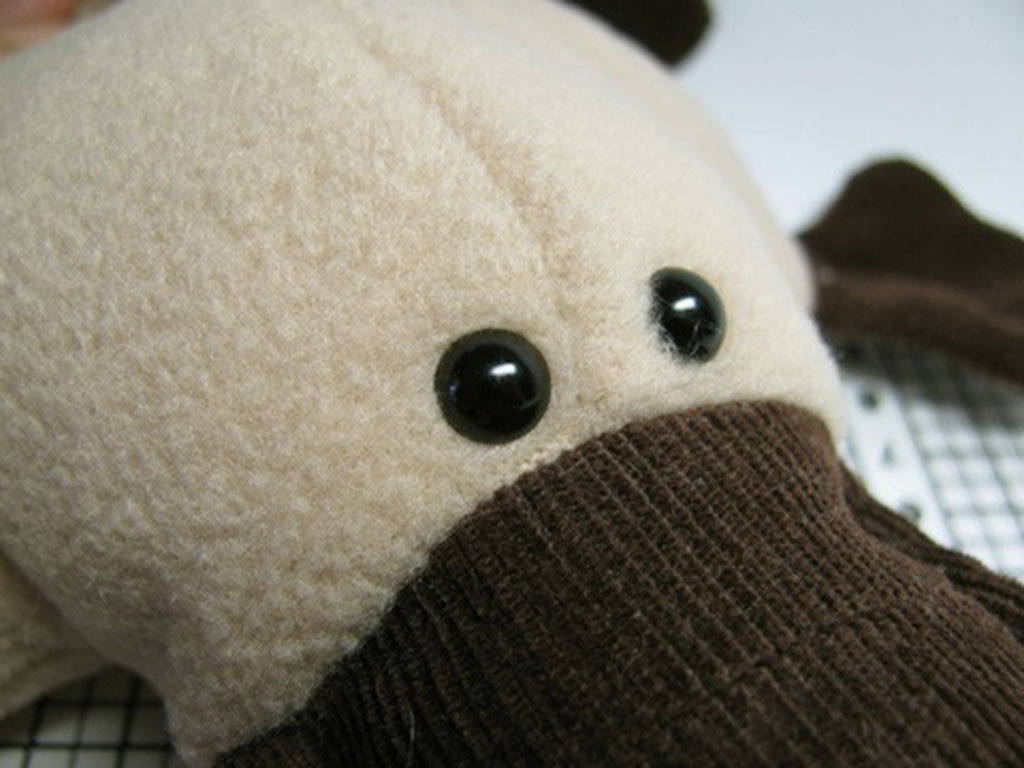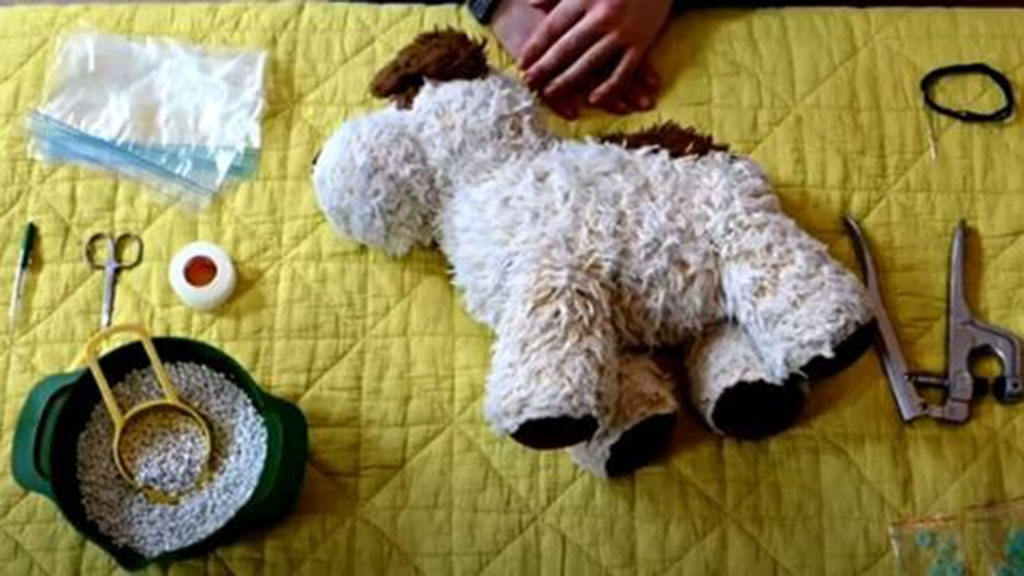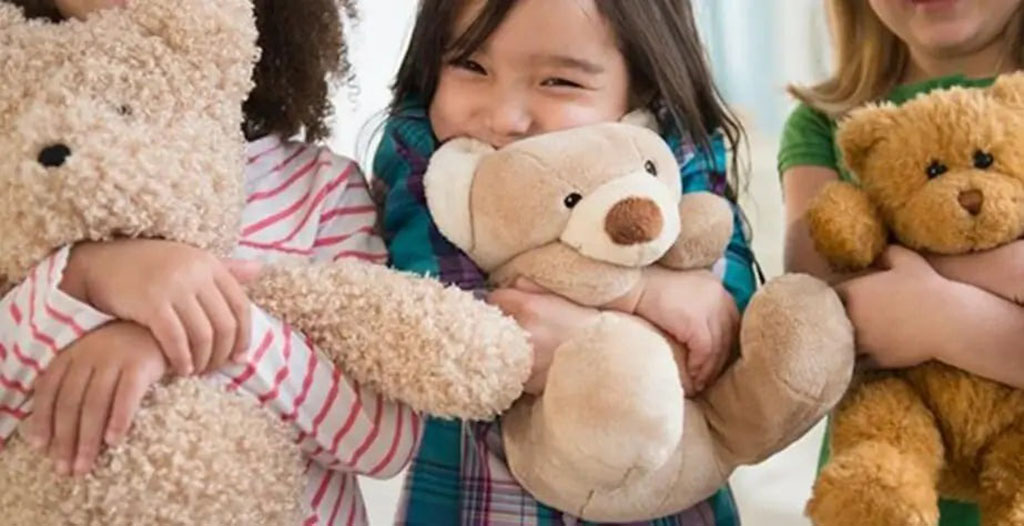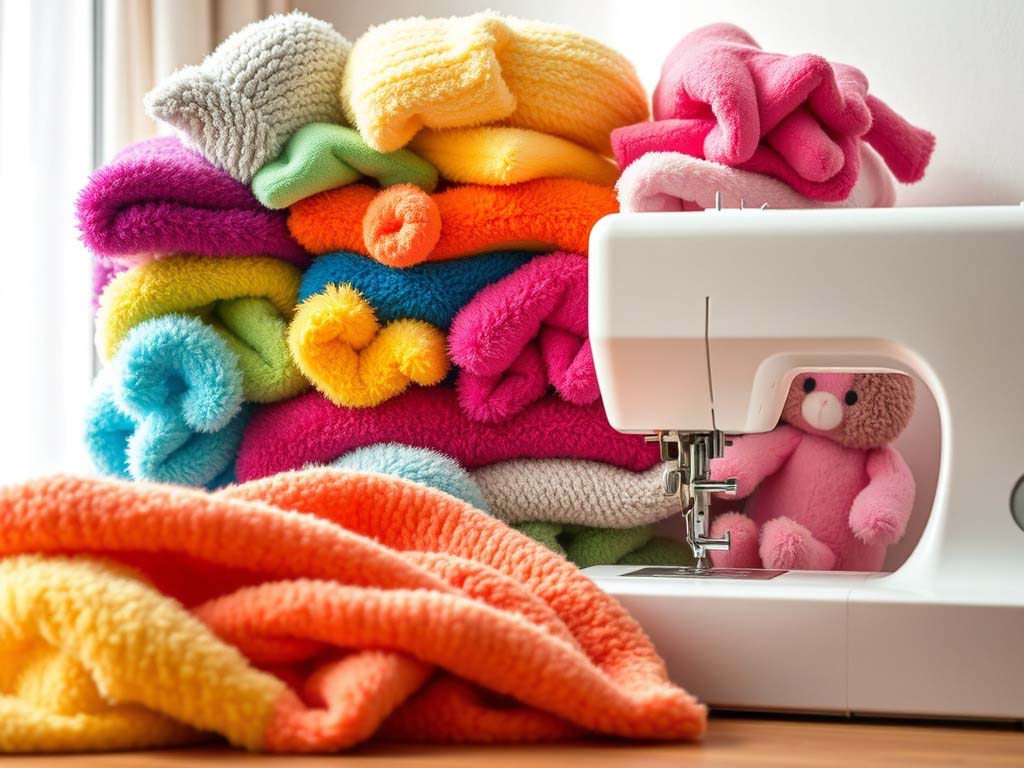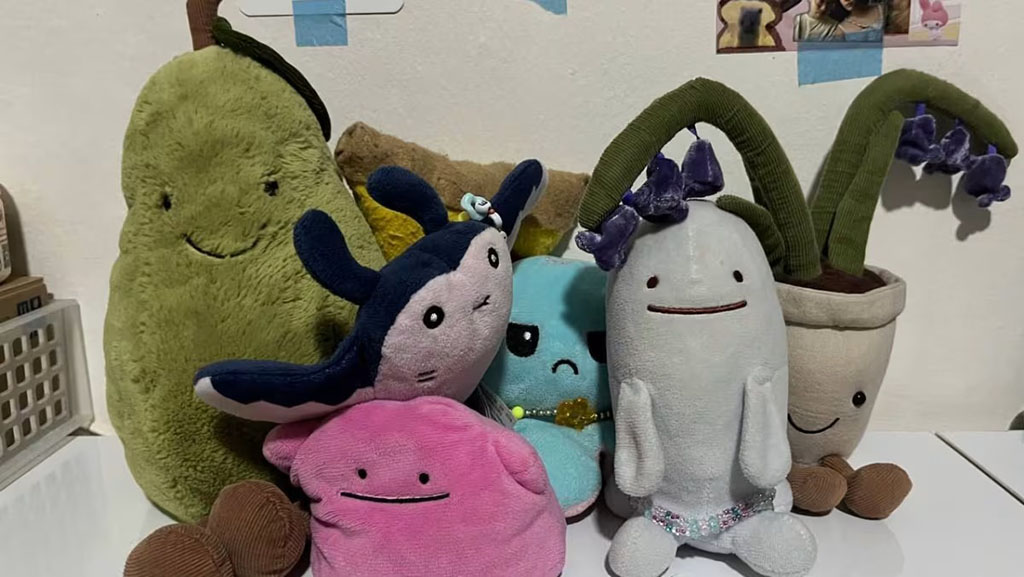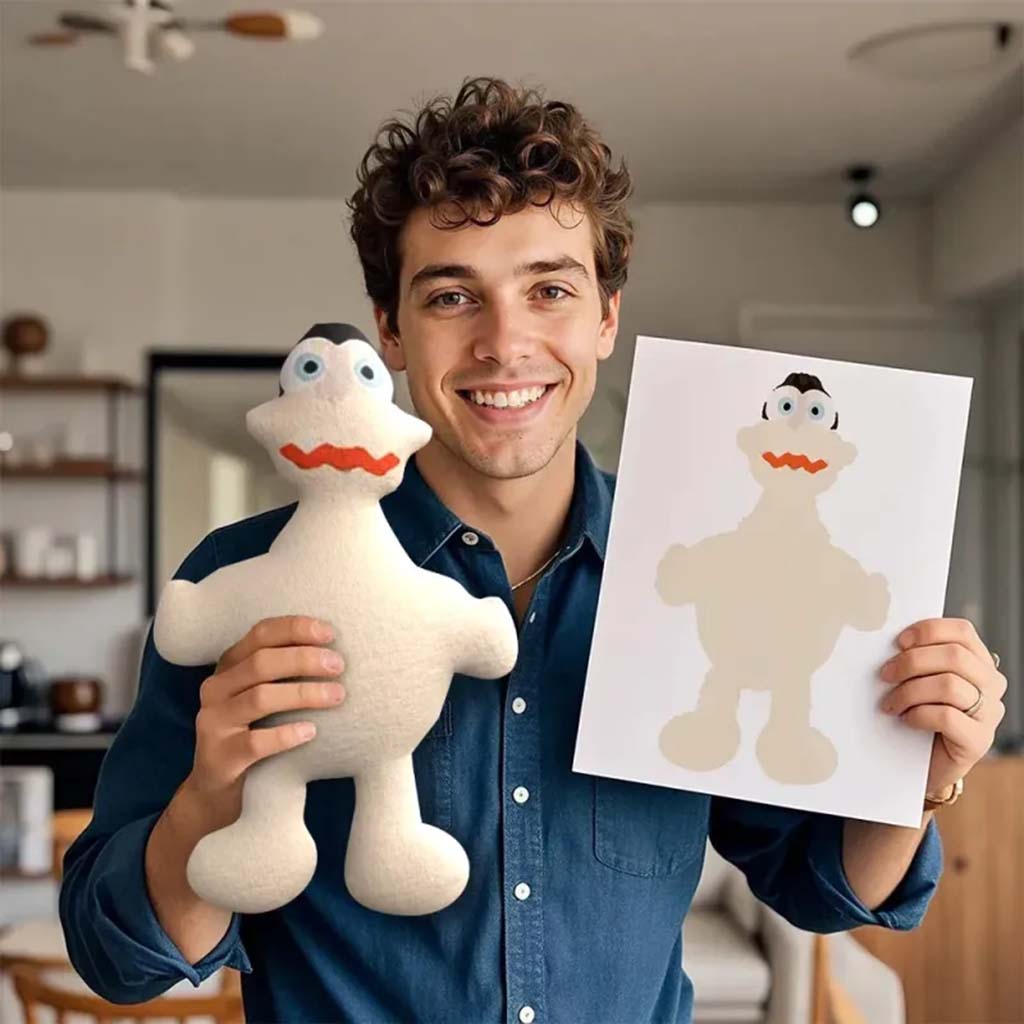By Amanda — Kinwin (OEM/ODM plush manufacturer; CE/ASTM/CPSIA ready)
Eyes decide the expression—and the safety grade—of a plush toy. In manufacturing, we choose between embroidered, appliqué felt/fabric, safety eyes (ABS/TPU), and custom-molded components. The best option depends on age grading, compliance, pull strength, and wash durability. Here’s a practical guide you can paste into your tech pack.
Which eye options are suitable—embroidered, appliqué felt, safety eyes (ABS/TPU), or custom molded?

Each method has a different risk profile, cost, and look. For infants, flat, sewn eyes are standard. For older-age plush or collectibles, mechanical eyes are possible—if they pass testing.
Table 1 — Eye Options at a Glance
| Eye Type | Look/Style | Safety Profile | Cost/Complexity | Best Use |
|---|---|---|---|---|
| Embroidered (poly thread) | Precise, flat, durable | Excellent for <36 months | Low–Medium | Baby, mainstream retail |
| Appliqué felt/fabric (stitched) | Soft, graphic shapes | Good if fully stitched (no glue) | Low | Baby (with tight stitching), budget lines |
| Safety eyes (ABS stem + locking washer) | Shiny 3D “toy look” | Good for 3+ if tested | Medium | Pre-school/older, gift lines |
| Soft safety eyes (TPU/TPE) | Softer dome | Good for 3+ if tested | Medium–High | Premium pre-school |
| Custom molded eyes (ABS + paint/print) | High detail, custom color | Good for 3+/collector if tested | High | Hero SKUs, licensed characters |
Rule of thumb: Under 36 months → no hard parts. Use embroidered or fully stitched appliqué only.
How do age grading and safety standards (EN71/CPSIA torque–tension, small-parts) determine eye selection?

Eyes are scrutinized in mechanical tests. If an eye detaches and fits in the small-parts cylinder, the toy can fail for young age grades.
- EU: EN 71-1 (mechanical & physical), EN 71-2 (flammability), EN 71-3 (chemical).
- US: ASTM F963 (mechanical), CPSIA (lead, phthalates) + tracking labels.
- Key tests for eyes:
- Torque + Tension on components (simulate twisting/pulling by a child).
- Small parts evaluation (no detachable parts for <36 months).
- Seam strength around the eye area (no tearing leading to small parts).
- Saliva/sweat colorfastness for baby items (embroidered/appliqué).
Table 2 — Age Grades vs. Recommended Eye Types
| Age Grade | Recommended Eyes | Avoid |
|---|---|---|
| 0–18 months | Embroidered only | Any hard parts, glued appliqué |
| 18–36 months | Embroidered / stitched appliqué | Hard eyes (unless line is strictly 3+) |
| 3+ years | Embroidered, appliqué, tested safety eyes | Unsecured components |
| Collector (14+) | Any, but label accordingly | Position as toys for young children |
Labeling must match the tested age grade. If your market includes toddlers, design for 0–36m standards to be safe.
What attachment methods—locking washers, back-nuts, ultrasonic welding, or stitching—ensure pull strength?

The eye itself is only half of the equation; attachment is what passes torque/tension.
- Embroidered eyes: Dense satin/chain fill, short stitch length, stabilizer under face fabric; no loose thread tails.
- Appliqué: Tight zigzag/satin stitch around the full perimeter; no glue-only bonds.
- Safety eyes (stem + washer):
- Insert through face fabric + internal backing patch (e.g., felt or woven tape).
- Use locking washers sized to stem diameter; press to spec.
- Verify minimum fabric thickness and washer bite.
- Back-nut systems / Ultrasonic welding: For custom molded housings, used mainly in licensed/premium builds; still require full testing.
- Hidden safety plates: Larger internal plates distribute load to pass tension tests.
Table 3 — Attachment Methods & Tips
| Method | Pull Strength Potential | Implementation Tip |
|---|---|---|
| Dense embroidery + stabilizer | High | Two layers of stabilizer for stretchy knits |
| Full-stitched appliqué (no glue) | High | Perimeter stitch must be closed and dense |
| Safety eye + locking washer | High (if backed) | Add internal backing patch to prevent tear-out |
| Back-nut / ultrasonic | High (engineered) | Control torque spec; 100% in-line checks |
Which material and finish choices (matte/gloss, UV-stable inks, colorfast threads) deliver durability and aesthetics?

Materials must stay good-looking after rubbing, sunlight, and washing.
- Threads: High-tenacity polyester embroidery thread; colorfast to wash/rub/saliva.
- Appliqué fabrics: Velboa/minky (short pile) or felt with low lint; stitched perimeter.
- Safety eyes (hard): ABS for clarity and hardness; TPU/TPE domes for softer look.
- Finishes:
- Gloss domes = classic toy shine; matte domes = premium/realistic.
- UV-stable inks or molded-in color for custom eyes; avoid easy-to-scratch prints.
- Chemicals: Must comply with EN71-3/CPSIA; no non-compliant surface paints.
Table 4 — Aesthetics & Durability Menu
| Choice | Look | Durability Note |
|---|---|---|
| Polyester embroidery (40 wt) | Crisp, matte–semi | Passes wash/rub with right tension |
| Appliqué velboa (short pile) | Soft, graphic | Dense perimeter stitch prevents lift |
| ABS glossy safety eyes | Shiny “toy” | Scratch resistance good; verify coatings |
| TPU/TPE soft eyes | Subtle dome | Softer feel; check UV stability |
| UV-stable inks / molded color | Color integrity | Better fade resistance outdoors |
How do manufacturing factors—backing fabrics, seam allowances, and QA pull tests—prevent detachment and recalls?

We engineer the face panel like a safety-critical zone.
- Backing fabric: For knits (minky/velboa), add warp-knit tricot or woven patch behind eye area to resist tear-out.
- Seam allowances: Slightly wider near eye positions; shave pile in seam to avoid slippage.
- Embroidery tension: Balance upper/lower tension to prevent tunneling and puckering.
- Needle size & density: Smaller needle for dense fill; test multiple densities to avoid cutting the knit.
- QA pull tests: In-line 100% pull checks for safety eyes (sample-based according to AQL); lab torque/tension on PP/production lots.
- Metal detection & visual: Ensure no broken needles; check symmetric placement.
Table 5 — Factory Controls (What We Do at Kinwin)
| Control | Purpose | Frequency |
|---|---|---|
| Backing patch under eye | Prevents tear-out | Every unit (hard eyes) |
| Embroidery stabilizer | Stops distortion | Every unit (sewn eyes) |
| 100% washer seating check | Confirms lock | Every unit (hard eyes) |
| In-line pull check (shop floor) | Early warning | Per batch/shift |
| Lab torque–tension test | Legal compliance | PP + production |
What are best practices for infant SKUs—embroidered/flat eyes, no hard parts, saliva/sweat colorfastness, easy-wash?

For <36 months, we standardize on flat, sewn eyes only.
Infant best practices:
- Eyes: Embroidered (dense fill) or fully stitched appliqué; no glue, no plastic domes.
- Fabrics: Short-pile minky/velboa or organic velour; low lint; pile ≤3 mm in face zones.
- Colorfastness: Pass saliva/sweat ≥ Grade 4; wash/rub ≥ 4–5.
- Wash care: Machine wash cold; air/low tumble; label clearly.
- Threads: Colorfast polyester; trim tails; no long floats on back.
- QA: Elevated AQL; extra visual for loose threads/lint.
Table 6 — Infant Eye Spec (Ready to Paste)
| Item | Spec |
|---|---|
| Eye method | Embroidered satin/chain fill (no hard parts) |
| Stitch density | High (balanced tension), no gaps |
| Stabilizer | 2 layers (tear-away or tricot) behind face panel |
| Face fabric | Short-pile minky/velboa (≤3 mm), low-lint |
| Colorfastness | Saliva/sweat ≥ 4; wash/rub ≥ 4–5 |
| QA | 100% visual + lint check; PP lab tests to EN71-1/2/3 & ASTM F963/CPSIA |
Quick decision guide (choose your path)
- If your line is baby-first (0–36m): Embroidered eyes only.
- If your line is 3+ and you want shine: Safety eyes with backing patch + locked washer; torque/tension test.
- If you need a graphic style: Appliqué with full perimeter stitching (no glue).
- If you need hero realism or licensed detail (3+ or collector): Custom molded with UV-stable color; robust attachment method; label age grade clearly.
Conclusion
The right eyes balance expression and safety. For infants, stick with embroidered or fully stitched appliqué—no hard parts. For 3+, tested safety eyes (with proper backing and locking) add gloss and depth. Whatever you choose, engineer the face panel, validate with torque–tension and small-parts tests, and keep colorfastness high for wash and saliva/sweat.
At Kinwin, I’ll translate your artwork into eye specs that pass on the first try—stitch maps, backing patches, washer selections, and QA pull plans included.
Contact me at [email protected] or visit kinwintoys.com to develop safe, beautiful plush eyes for your next range.


